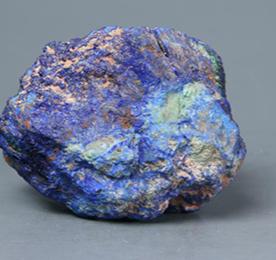Henan Xinjinhui Stainless Steel Industry Co., Ltd. was founded in 2005, and over the years, it has grown from a small enterprise with an annual output of 50,000 tons of stainless steel to a large-scale industrial cluster covering 2.5 square kilometers. The company now integrates the entire value chain—from raw material procurement, smelting, sheet production, to deep processing. While many steel companies were struggling during economic downturns, Xinjinhui managed to maintain steady growth, even during the 2008 financial crisis. How did this once-small firm become a market leader? In 2005, China's construction steel industry was booming, attracting massive investments. With global steel production reaching record levels, the market became highly competitive. But instead of following the crowd, Xinjinhui chose a different path—focusing on stainless steel, which was considered less popular at the time. "The steel industry needs a competitive advantage," said Chairman Shang Xueling. "In the low-carbon era, logistics costs often eat up most of the profit. Saving a few hundred dollars through better management is no longer enough. We need to build a regional economy to stay ahead." One of Xinjinhui’s key strategies was leveraging local resources. Unlike carbon steel producers that relied on imported materials from countries like Australia and Brazil, Xinjinhui used locally sourced stainless steel waste. This approach significantly reduced transportation costs. For every ton of stainless steel produced, 70% came from recycled materials, saving millions in logistics annually. Since its establishment, Xinjinhui has operated at full capacity for nine consecutive years. Even during the 2008 crisis, when many steel companies struggled, Xinjinhui maintained 100% operational efficiency. In contrast, some carbon steel plants saw their production rates drop below 60%. In 2013, despite a challenging environment, Xinjinhui expanded its production capacity by 100,000 tons, reaching a total of 1 million tons per year. That year, the company reported a net profit of 66.012 million yuan. Yet, Xinjinhui remains humble. When asked about its profitability, Chairman Shang Xueling said, "The current environment is tough, and it's not easy to talk about specific numbers. We prefer to keep things low-key." China's per capita stainless steel consumption is currently around 17 kilograms, far behind developed countries that consume over 30 kilograms per person. In 2013, global stainless steel output reached 36.4 million tons, with China producing 18 million tons—nearly half of the world's total. As the largest producer, China is poised to become a major consumer and exporter of stainless steel in the future. "If China reaches a per capita consumption of 30 kilograms, that would mean 40 million tons annually," Shang Xueling noted. "There will be more opportunities, but also more competition." Recognizing this, Xinjinhui began planning early. By 2007, the company had already built a diversified group structure, including Jinhui Group, Dingda Stainless Steel Products Group, Daxin Technology, and renewable resource enterprises. From smelting and processing to sales, logistics, and mineral investment, each subsidiary plays a crucial role in the supply chain. "You don’t have me, you have me. If we are strong, we make each other strong," Shang Xueling said. "Stainless steel will face the same challenges as carbon steel. Only by building a complete industrial chain—from waste collection to product sales—can we ensure long-term success." Steel Channel,Slotted C Channel,C Section Steel,Structural Channel Guangdong Tianchen Steel Structure Engineering Co. Ltd. , https://www.tcsteeltech.com